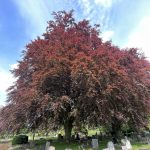Wrexham Forest Partnership is celebrating the second Woodland Connections Week from 15 June to 21 June and the theme this year is “Seeking Sanctuary”. Trees and woodlands are a sanctuary for people and wildlife and provide all sorts of benefits to health, wellbeing, biodiversity and the effects of climate change.
We are excited to share our “Sanctuary” trees map; inviting people to discover trees on their doorstep and have highlighted a selection trees from around Wrexham that are worth a visit. Read through the description about each tree then take a step outdoors for a visit.
If you have any trees or areas of woodland in Wrexham that should be recognised as a ‘Sanctuary’ please send them through to us with a photo, location and a short paragraph about why the tree is worth shouting about.
Watch out for events, talks and activities during Woodland Connections Week as we demonstrate how trees and woodlands are a sanctuary for people and wildlife.
Find the closest Sanctuary Tree to you below
Yew, St. Mary the Virgin, Overton on Dee, Wrexham ///airtime.elder.culminate
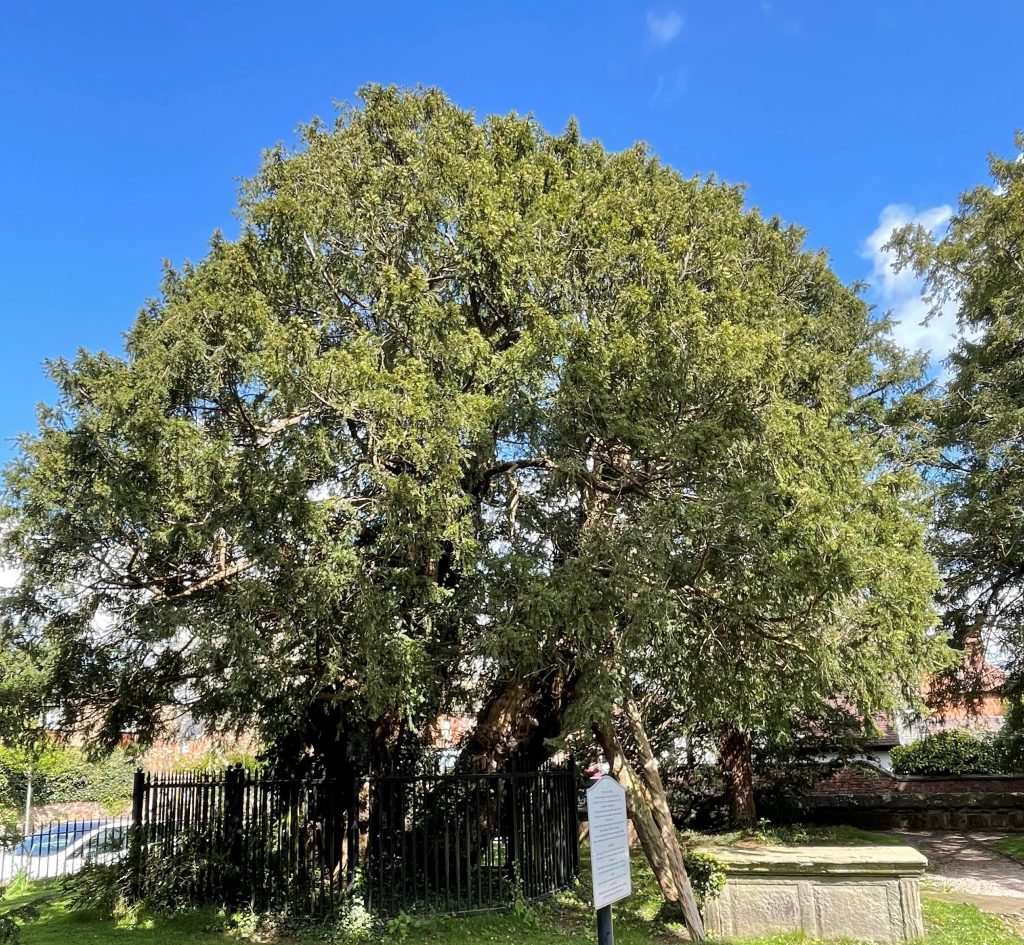
The Yew trees that ring Church of St Mary the Virgin are noted as one of the ‘Seven Wonders of Wales’.
The oldest Yew (pictured) is estimated to be between 1500-2000 years old. The tree is currently surrounded by a protective fence and is propped up with supports to preserve this living legend. Yew trees are traditionally connected with eternal life and resurrection and as such, are a common sight in UK churchyards.
Wandering through the atmospheric grounds of the Church you will feel transported back to medieval times, with the Yew trees offering this historical connection to the past. As you make your way through the grounds think about the generations of people that have walked the same path and may have found sanctuary amongst the eaves of these trees.
Oak, Plas Power Woods, Nant Mill Visitor Centre Rhosberse Road, Coedpoeth
Wrexham, LL11 3BT /// moving.pleasing.clockwork
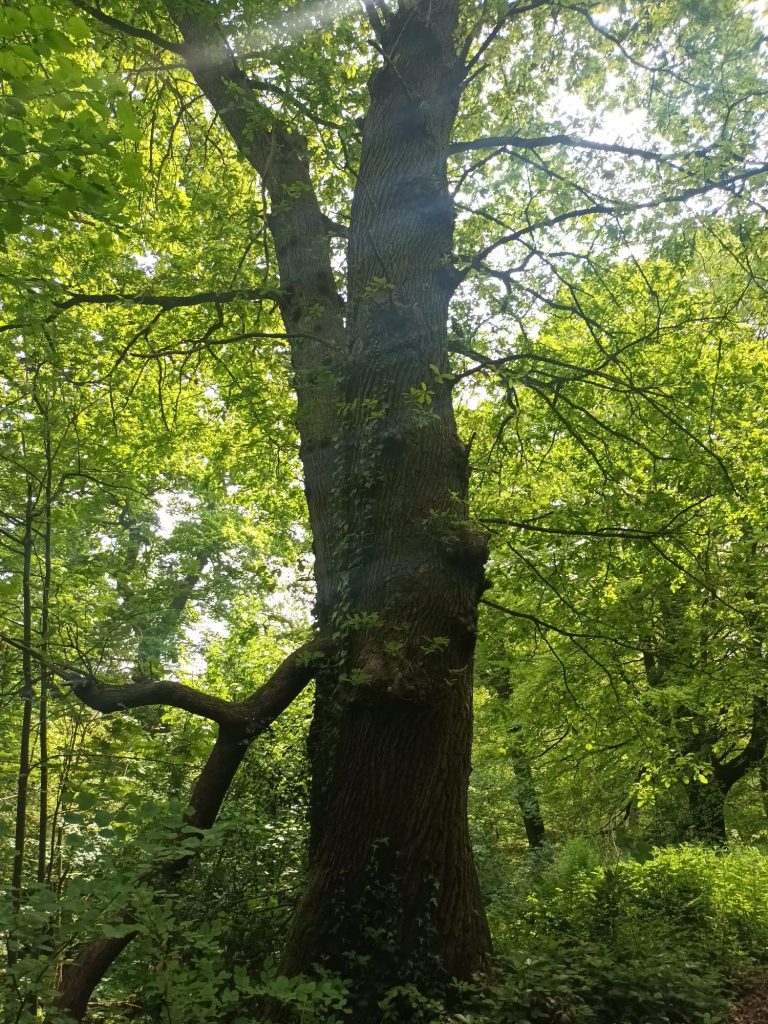
This is one of the Notable Trees registered on our Ancient Tree Inventory.
As this oak tree grows along Offa’s Dyke, a rampart built between England and Wales in the 785 CE, we have recorded this tree as notable.
Notable trees are usually mature trees which stand out in the local environment because they are large in comparison with other trees around them. They are the next generation of veteran trees.
There are 326 species of wildlife that call this oak their sanctuary and home. Squirrels, jays and badgers love their acorns and caterpillars flock to eat their leaves which, in turn, attract nuthatches, green woodpeckers and tree creepers.
Sweet Chestnut, Acton Park, Jeffreys Road, Wrexham, LL12 7PE //////name.prices.neat

Sweet Chestnuts are thought to have been brought to the U.K. by the Romans as a food source. They are often roasted during the Winter months.
You can find welcome shade and shelter under the huge canopy of this Sweet Chestnut tree which spans an impressive 24 metres. Step under the canopy of this magnificent tree and feel the shift into the natural world. Look out for birds such as woodpeckers and tree creepers climbing the trunks and squirrels busily rushing along branches.
Horse Chestnut, Alyn Waters Country Park, Gwersyllt, LL11 4AG /// resolves.gurgled.clutter
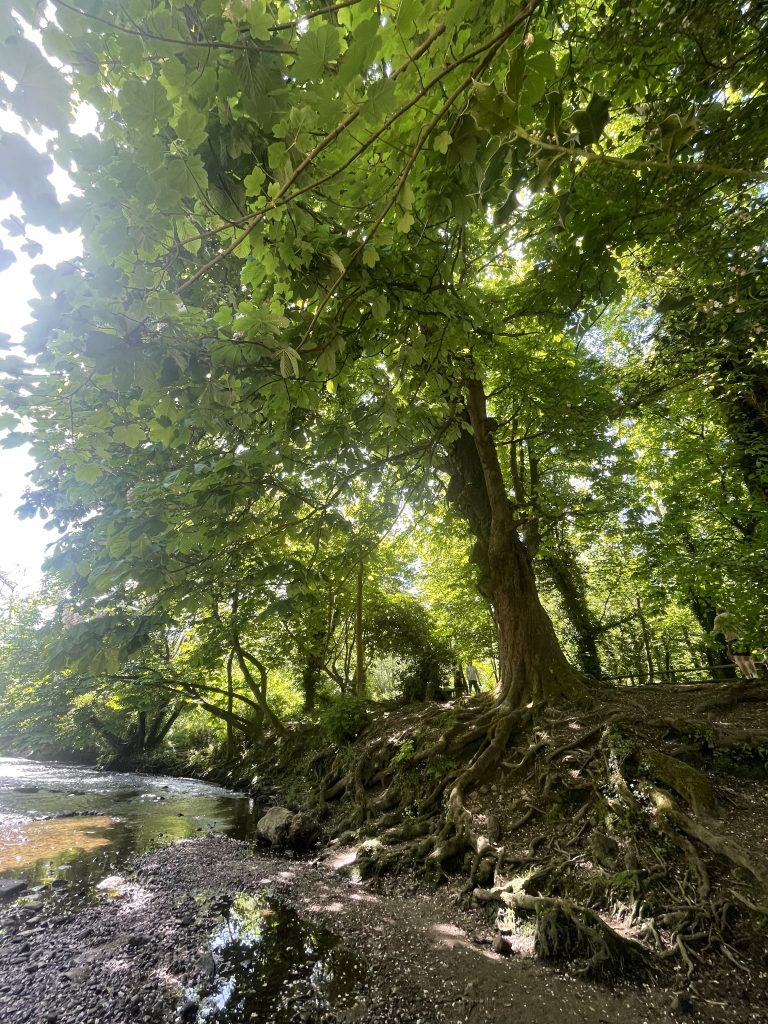
Nestled deep within Alyn Waters Country Park is an impressive Horse Chestnut that hugs the banks for the River Alyn. Located in a favoured paddling spot for visitors, the River Alyn has slowly eroded away the soil around this tree revealing an extensive root network; demonstrating how remarkable trees are underground as well as everything we see above ground.
Trees such as the Horse Chestnut send out intricate root systems which helps stabilise them against inclement weather conditions as well as support them to gather water and nutrients from the soil. It has recently been discovered that trees can “talk” through their roots, sending chemical messages to each other if there is a threat such as pest or disease. It’s has even been discovered that mature trees send nutrients and water to neighbouring young trees to support development and will also support damaged trees in a similar way.
Take time out to sit by the tree or walk along the riverbank. Watch out for the flash of kingfishers darting in and out of the water and dippers bobbing amongst the rocks within the river.
Goat willow, Erlas Victorian Walled Garden, Bryn Estyn Rd, Wrexham LL13 9TY ///preheated.editor.tested
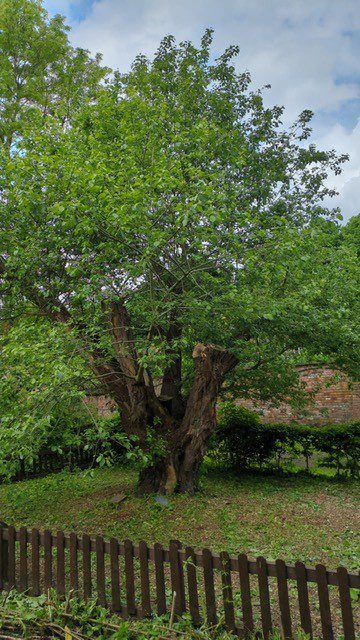
This Goat Willow located within the grounds of Erlas Victorian Walled Garden is dated between 250 and 300 years old.
Veteran trees such as this one are a sanctuary in their own right, providing a home for a variety of fungi, ferns and lichens as well as nooks for invertebrates and hollows for nesting birds.
In particular Goat willow foliage is eaten by the caterpillars of a number of moths, including the sallow kitten, sallow clearwing, dusky clearwing and lunar hornet clearwing. It is also the main food plant for the purple emperor butterfly.
The tree has recently undergone some management work under the advice of the Arboricultual Manager at Wrexham Council and an Arboricultural Consultant allowing the Goat Willow to survive another winter and is currently thriving which can be seen by the healthy new growth.
Copper Beech, Wrexham Cemetery, Ruabon Rd, Wrexham LL13 7RE ///sized.shepherdess.wager
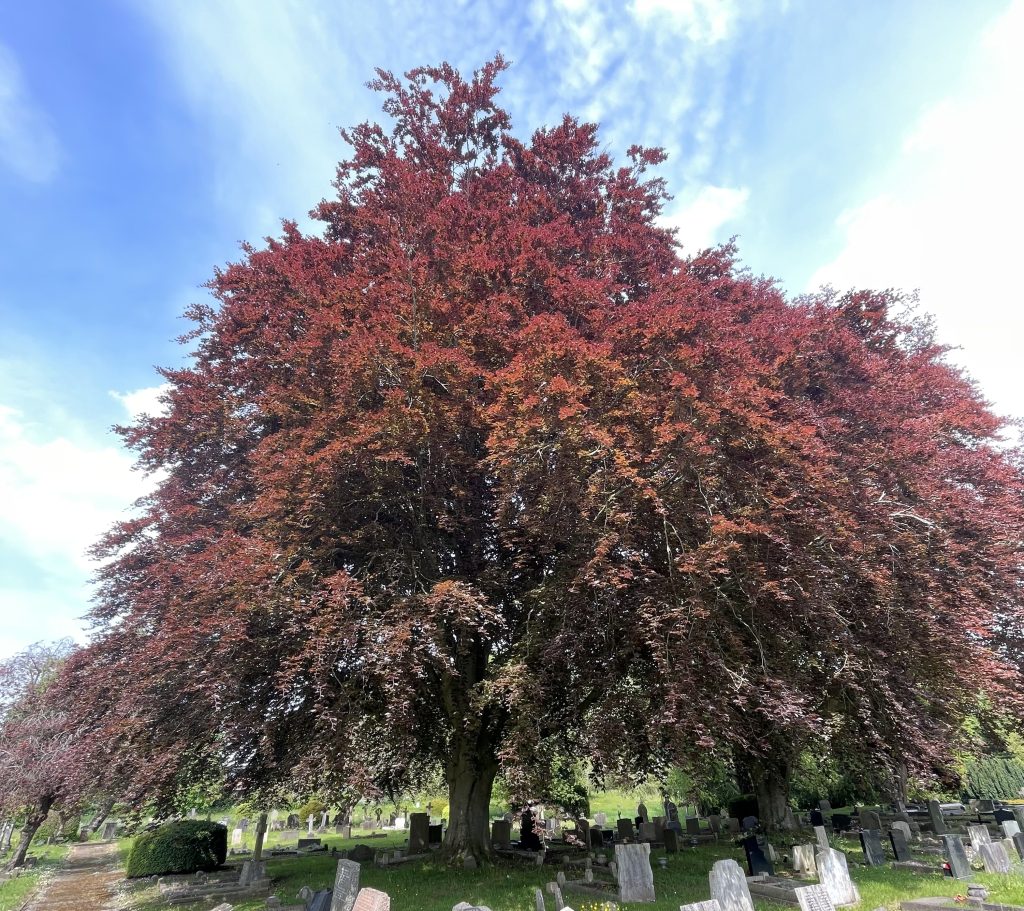
This pair of Copper Beeches in Wrexham Cemetery provide a dramatic display of colour and contrast against the landscape. You can immediately spot the purple-red leaves as you enter the Cemetery and taking a walk around the quiet, peaceful pathways within the surrounding urban environment, you gain a sense of calm and tranquillity. Interestingly, the Wats Dyke, a Scheduled Monument crosses the Cemetery and follows the line of one of the internal paths.
Copper Beeches appeared as natural variants of the Common Beech in various parts of Europe, as early as the 15th century and have become a familiar favourite in urban parks and gardens.
Cemeteries are quiet, undisturbed spaces where people can find sanctuary for reflection and remembrance; also making them a haven for local wildlife where urban wildlife can find a home.
Llwyneinion woodlands Llwyn Einion Rd, Rhostyllen, Wrexham ///mailers.acted.fancied
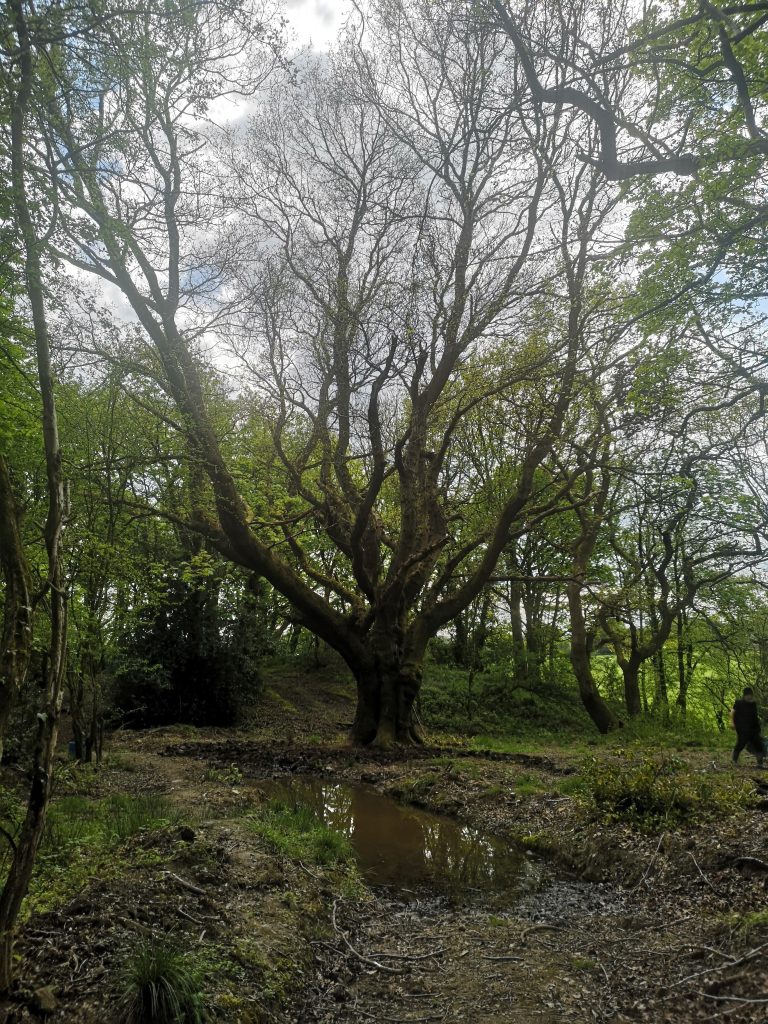
Llwyneinion Woodland is classified as an ancient woodland. Ancient woods are areas of woodland that have persisted since the1600’s, this is when maps started to be reasonably accurate so we can tell that these areas have had tree cover for hundreds of years. They are generally woods that have been relatively undisturbed by human development, unfortunately, we cannot say that about Llwyneinion woods.
Our Oak tree is around 300 years old, so somewhere in the 1700’s it was a sapling. Llwyneinion Woodland and therefore our Oak tree has seen Iron Ore mining in the 1700’s, clay and shale quarrying during the 1800’s, along with coal mining during the 1900’s.
We have very recently found evidence of a horse drawn railway line which would have passed within meters of the Oak tree carrying Iron Ore, clay and shale out of the woodland. Peace and tranquillity returned above ground at least during the 1900’s and the Oak tree flourished. The only disturbance being a few local inhabitants on their daily saunter through the woodland.
Unfortunately, the woodland was discovered in 2019 and turned into a playground for 4×4 vehicles. The whole woodland suffered terrible damage and the Oak tree, well, that became a roundabout and its trunk used for winching vehicles out of the mud.
The Oak tree now stands quietly again, surrounded by saplings and bird song once more. This tree has seen so much and is a true description of a Veteran Tree: a veteran tree is one that has developed some of the features so often found in ancient trees such as cavities, dead wood, and flaking bark. They may, however, not be that old but have had a hard life and suffered damage from storms or man-made injuries.
So come, bring a drink, sit and rest a while by our Oak tree and enjoy.
Little Vawnog End of Foxwood Drive, Bersham, Wrexham, LL14 4JF /// Possibly, tidy, crumples
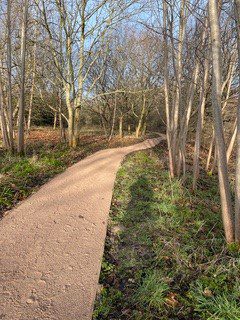
This delightful little woodland is owned by Offa Community Council, consists of native woodland and grassland areas as well as being surrounded on one side by the River Clywedog. The tree species present include oak, ash, aspen, hazel, holly, beech and chestnut and many varieties of flowering plants which vary throughout the season.
It is an oasis of calm, that is easily accessible off Bersham Road near Wrexham City Centre. A reasonably flat area, it has footpaths forming part of the Clywedog Trail, as well as linking to Bersham, Rhostyllen, Felin Puleston and Erddig.
Pontafadog Oak, Chirk Castle ///museum.winters.strictest
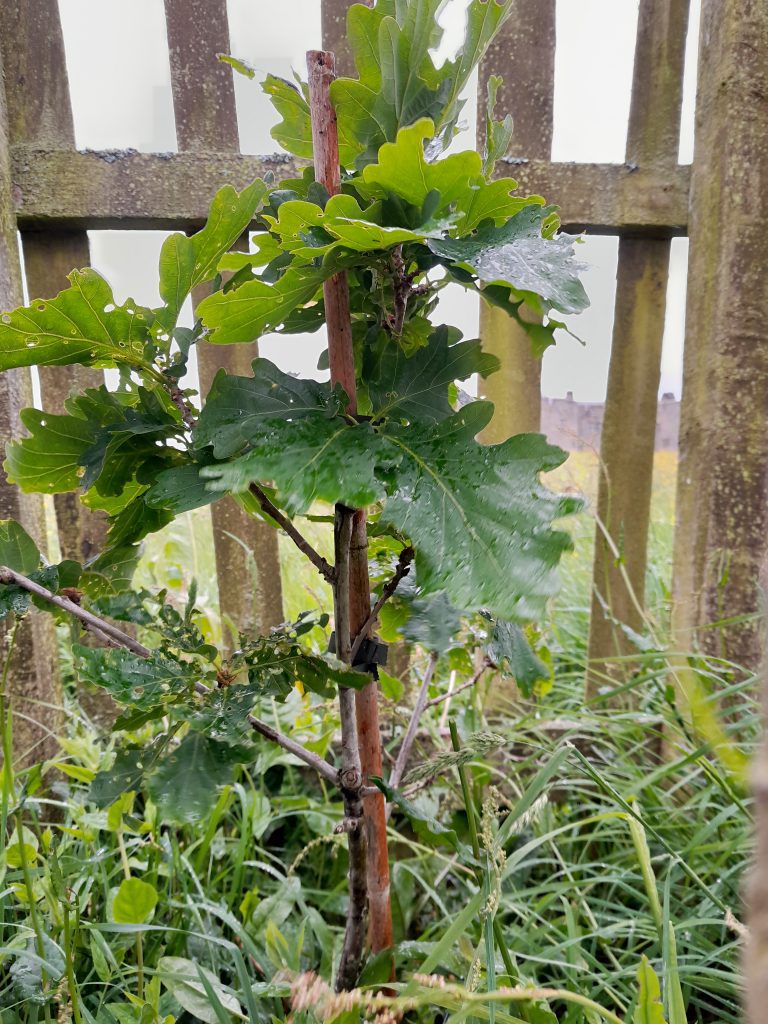
The Pontafadog Oak has returned!
The Pontafadog Oak stood for an estimated 1,200 and 1,700 years old at Cilcochwyn Farm, near Chirk until it fell in a storm in 2013. A sapling grafted from the Pontfadog Oak in 2013 by the Crown Estate has now been planted in the grounds of the National Trust’s Chirk Castle, hopefully safeguarding this exceptional tree for another 1000 years.
Taking cuttings of ancient trees and growing them on help us preserve the lineage of trees that have stood the test of time. It may be that these trees have a certain resilience to pests and diseases which can be studied and help us protect future generations. Ancient trees also have a heritage that dates back many years and utilising this will help us maintain habitats for rare plants and animals that can rely on certain species of tree for their survival.
Giant Redwood/ Wellingtonia, Erddig /// expansion.share.impulse
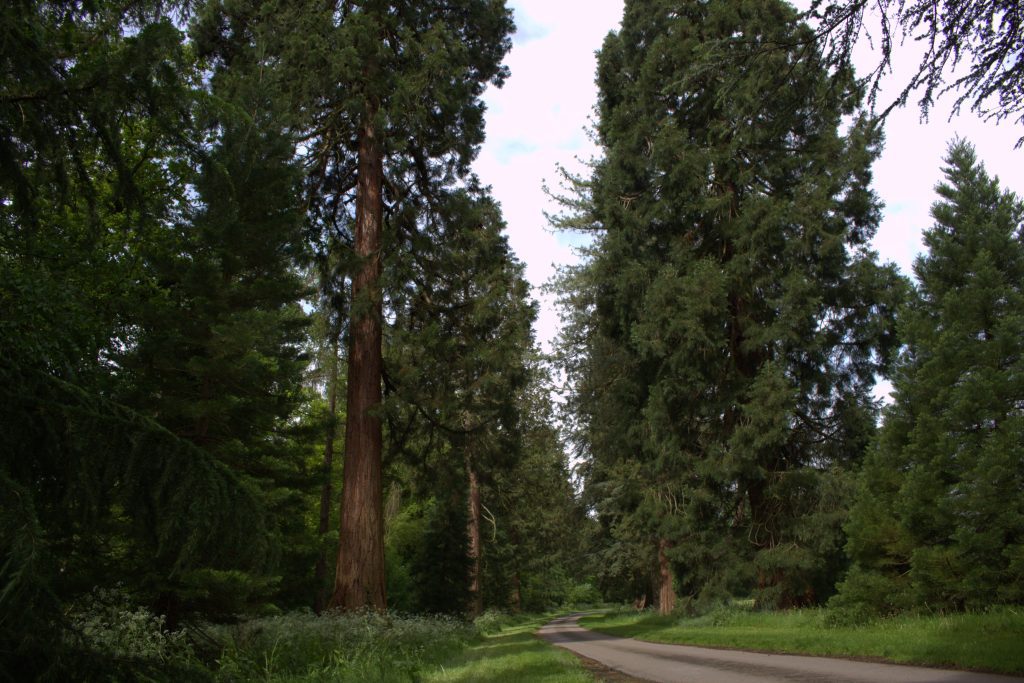
The National Trust has nominated the Wellingtonias that line some of the drives running through the Erddig estate and when you get up close to them you can see why. Native to America these trees were first introduced to Britain in the mid-19th Century. Revered for their height and girth, these trees quickly adorned many country estates, and we can still see them today. Wellingtonias are attributed with being able to grow into the world’s largest living objects, they can reach a height of 100 metres.
Take a walk amongst the giants of our time and marvel at the sheer size of these enormous natural wonders. The Wellingtonias at Erddig are a favourite with National Trust volunteers and the members of the public, as they were with the Victorians who first introduced them.








